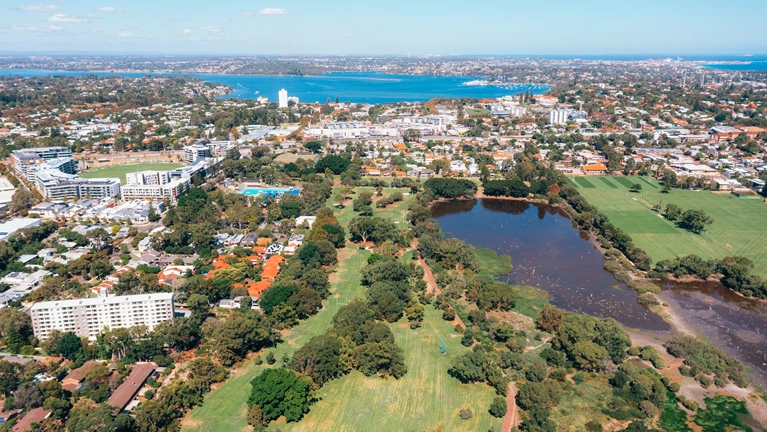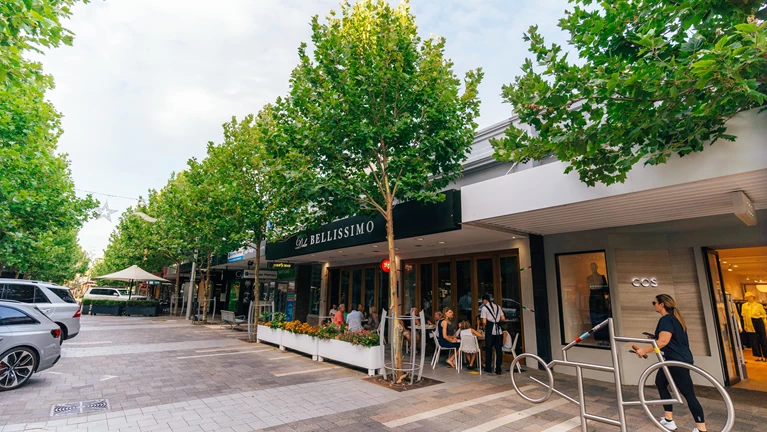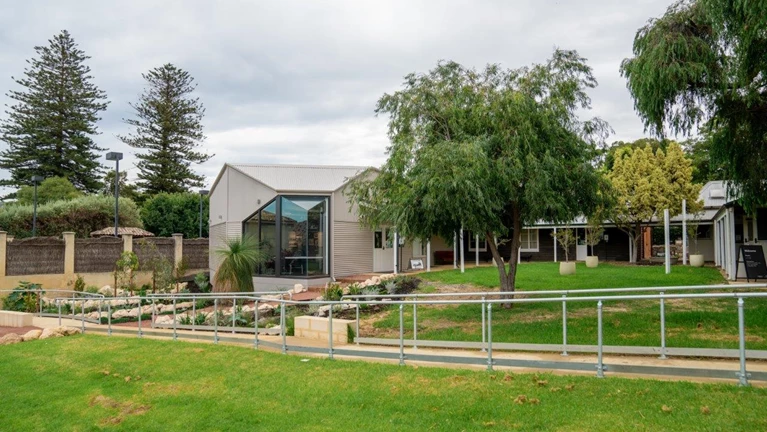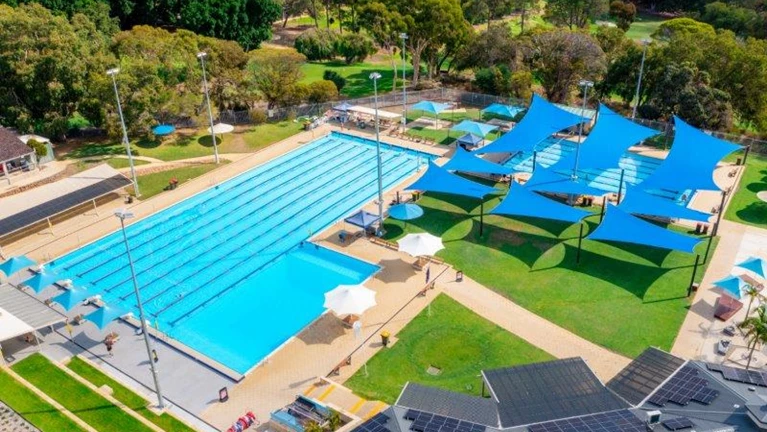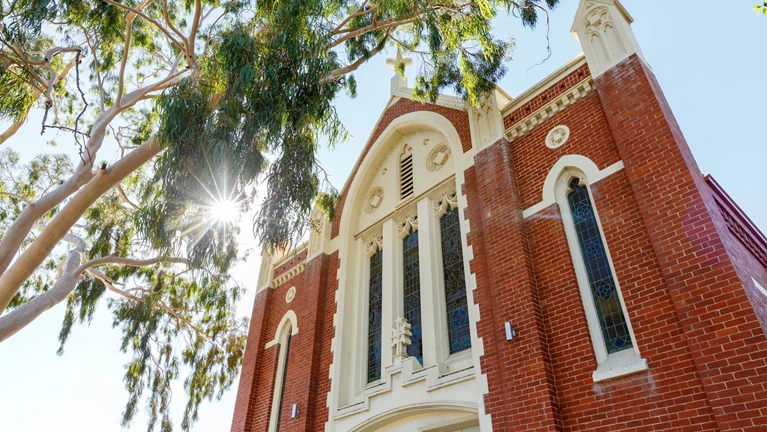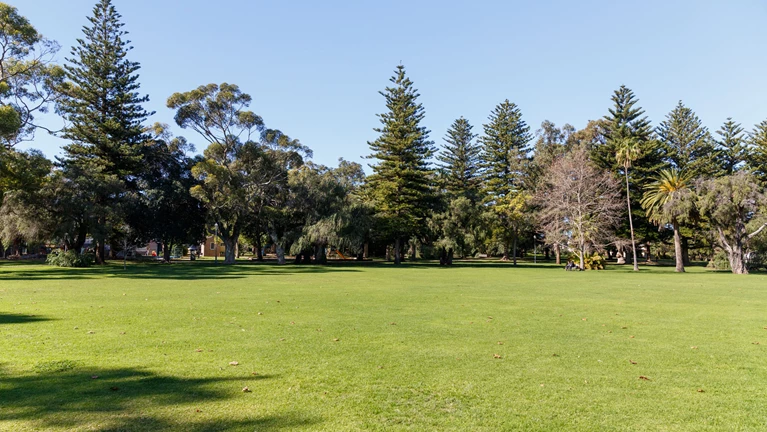Included on this page
Noongar Boodjar
This has always been Noongar land. The Noongar people have lived in the south-west corner of Western Australia for at least 45,000 years. The Noongar population is made up of 14 different language groups. The suburbs of Claremont and Swanbourne are located on the lands and waters of the Whadjuk language group.
The banks of the Swan River (Derbal Yarrigan) and the wetland area of Lake Claremont (Galbamaanup) have always been significant as campsites and hunting grounds and they remain intrinsic to their spiritual beliefs and creation stories relating to the great serpent (Waugal). The river and lake provided the Whadjuk Noongar people with an abundance of food such as fish, crabs, water fowl, snakes and lizards as well as bush food and freshwater.
"We used to have kylies, made out of pieces of tin, or a spear, and just throw them, because there used to be big schools here one time, of fish. It’s unbelievable how they used to be – crabs, get plenty of crabs here!"
Christopher ‘Corrie’ Bodney, Aboriginal man born at Lake Claremont in 1932.
Despite colonisation from 1829, Noongar people continued to camp in the area. However, as European settlement expanded, tensions arose with the British colonists over spearing animals for food and seasonal firing of the land. Noongar people became more restricted in their movements and established several permanent camps close to lakes and waterways in the metropolitan area, including around Lake Claremont.
There is an ongoing history of friendships and work relationships between Noongar people and colonists. Around 1900, prominent Noongar elder Fanny Balbuk Yooreel and an unknown Aboriginal man, Jimmy, worked for the Caporn family and camped on their property in Victoria Avenue. Also, Noongar people could always camp on a corner of the land owned by the Briggs family at Lake Claremont.
Granny Briggs and (daughter) Katie used to come up and sit around on the tins talking to my grandmother (Noongar elder Clara Leyland).
Robert Bropho, Aboriginal man whose family camped in Swanbourne 1930s - 1950
The Bodney family also lived in a bush camp, on the place where Swanbourne Primary School now stands. Corrie Bodney was a bush baby born at this camp, he remembered:
"We really enjoyed life in the bush, you know, we were bred and born to live in the bush, because things were just sort of free and easy, we could do what we wanted to do."
There was also opposition to the Noongar camps. When the Claremont Board of Health established a temporary shed for Aboriginal people in 1898, residents complained; “for a gang of yelling blackfellows to be located in front of one’s house would be most objectionable.” As a result, the shelter shed was located further away on what later became the Claremont Showgrounds.
The last camps at Lake Claremont were demolished by the Nedlands Roads Board in 1951. The Council decided that the district “was not a fit and proper place for a native camp (because) the white population was spreading in the Swanbourne area.” However, some councillors argued against the demolition saying “they have as much right to live there as we have.”
This land continues to be significant for Noongar people, who return to visit, and to share information and knowledge. As Noongar woman Lynnette Coomer said, “it is important because it gives us a sense of belonging and being connected to country.”
The Town of Claremont acknowledges the Noongar people’s long and rich history with the area and seeks to establish relationships of respect and mutual benefit through the development of a Reconciliation Action Plan (RAP).
Community History
The early colonists farmed wetlands like Butler’s Swamp, planting them as the water levels dropped in spring and harvesting before the high water levels of winter. The soldiers however, were not farmers, only four had worked on farms, three had been general labourers, two had been porters and the others had been respectively a groom, cook, tailor, painter, shoemaker, clerk and teacher.
They faced the situation of having to live while clearing, planting and learning how to farm but their tiny settlement was too far from Perth and Fremantle for them to walk to any place of employment. They were forced to work away from home or to send their wives into town to work as washerwomen while they stayed and cleared the blocks. Yet most persevered and eleven of the original nineteen stayed long enough to win the freehold of their properties granted after seven years.
Five sold up after a few more years and settled elsewhere leaving six original families, joined by four more, who formed the divided nucleus of a village spread between the fringes of Butler’s Swamp and the shores of Freshwater Bay.
In September 1853 a convict depot was established at Freshwater Bay on land adjacent to the northern side of the Perth to Fremantle track. The depot consisted of five wooden buildings and a well. Between 1855 and 1857 it was used as an invalid depot for ticket of leave men and was then re-established as a convict depot. In 1862 a stone building to house 40 men and a stone warder’s cottage replaced at least two of the wooden buildings; they may have replaced all but the cookhouse. These new buildings were on the southern side of the new alignment of the Perth to Fremantle track.
The convicts worked on building and maintaining the Perth to Fremantle road all through the 1850s, 1860s and 1870s. They also quarried the stone for the small school built in 1861 on the shores of Freshwater Bay for the children of the settlement. The convicts at the depot were reported to be generally well behaved, not requiring armed guards to prevent escape or enforce road work. Their work on the road enabled a regular mail service to go by road rather then by river. A mailman would set off from both Perth and Fremantle and meet at the Halfway Tree in Claremont, a huge old Tuart that could be seen for two kilometres. This tree sadly met its fate at the hands of officialdom in the 1920s by being pruned so severely to make room for the Perth Tramline cables that it died.
Organisational History
The areas known today as the Town of Claremont and the City of Nedlands, were once within the jurisdiction of the old Perth Roads Board. On 17 May 1893 polling took place to elect seven residents to represent a newly formed Claremont Roads Board.
By 1898 the population of the district numbered 1700 and after a petition and government intervention the Municipality of Claremont was formed. Nine councillors and an auditor were sworn in with James King as the first Mayor. However, the suburbs of Nedlands and Dalkeith remained the Claremont Roads Board until 1931 which can cause much confusion when researching the past.
Early Municipal meetings were held in the Congregational Church, on Stirling Highway, until the Edwin Summerhayes designed Municipal Chambers was constructed in 1899. Summerhayes later designed the Town’s War Memorial in 1921.
In 1907 North (West), East and South Wards were established and the first ward-based election saw each ward electing three councillors. On 1 July 1961, under the Local Government Act 1960, the municipality became the Town of Claremont. Since that time, boundaries have changed, as has legislation strengthening the role of local government in the community.
